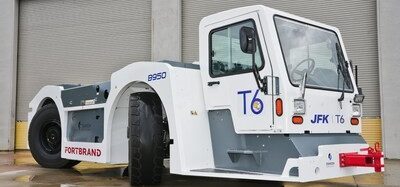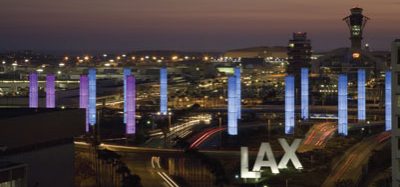Mitigating aviation’s impact on the environment
Posted: 7 June 2007 | Victor Aguado, Director General, Eurocontrol | No comments yet
Aviation faces a truly major challenge: growth. In the past 50 years, it has grown by a factor of 20 and annual growth of around 3-7% is expected in the next 20 years – which means that 1995 traffic will have doubled by 2020. The question is: how can this growth be made sustainable?
Aviation faces a truly major challenge: growth. In the past 50 years, it has grown by a factor of 20 and annual growth of around 3-7% is expected in the next 20 years – which means that 1995 traffic will have doubled by 2020. The question is: how can this growth be made sustainable?
It is undeniable that people want to travel more and more. It has never been so easy or so cheap to fly. But concerned air travellers do not want their flights to have a negative effect.
Airports and environmental issues
Most environmental problems these days centre around airports. There is the noise nuisance problem and the issue of air quality.
It goes without saying that many of the problems that airports face are, in fact, landside ones: congestion and traffic in the vicinity of the airport; problems associated with land-use planning (or the lack of it) and the proximity of other sources of pollution, such as motorways.
There are also noise abatement procedures, noise routes, noise-related airfield configuration restrictions, noise preferential runways, noise dispersion regimes, movement restrictions and curfews, impact limits, onerous planning and consultation processes and other environmental management measures.
Airports have to cope with all these environmental constraints while maintaining high levels of safety and ensuring adequate capacity to meet demand. As traffic increases, which it does relentlessly, airports are hard pressed to minimise environmental impact and to maintain the maximum possible airport throughput.
However, environmental issues, particularly at airports, should not be seen in isolation. Although important, especially to local inhabitants, they should be seen in a wider context of sustainability. Airports are significant generators of income, jobs and general prosperity for their neighbourhoods and it is counter-productive to society if small gains in environmental performance are won at the cost of economic development.
EUROCONTROL’s projects to help airports and the environment
EUROCONTROL is developing a portfolio of airport-related environmental initiatives which will help airports to improve their performance in this area and then be able to communicate their progress convincingly.
The initiatives have been selected after extensive research and consultation and are in line with EUROCONTROL’s various lines of expertise.
The first key activity has been to facilitate the implementation of Continuous Descent Approach (CDA) in a harmonised manner across Europe. This work was triggered by operational stakeholders, principally airlines, who not only appreciated the safety implications of an uncoordinated development of CDA across Europe, but also wanted the benefits that could be gained from CDA’s potential to reduce noise, fuel burn and emissions.
CDA has become a European Convergence and Implementation Plan Objective (ECIP IO ENV01). EUROCONTROL has established a multifunctional team of airspace, navigation, airport, environmental and ATC (Air Traffic Control) systems experts to work with stakeholders in developing pan-European CDA guidance material. This will be available from June 2007.
Operational CDA flight trials have been undertaken at Manchester International, Stockholm Arlanda and Bucharest Henri Coanda International Airports; they have demonstrated that CDA can be implemented successfully.
Results from the trials typically indicate that, along the CDA approach segment, noise reductions of 10-40% and fuel savings of 50-150kg per flight can be achieved, with associated reductions in greenhouse gas emissions (principally carbon dioxide and oxides of nitrogen).
Another study is currently under way to demonstrate the feasibility of implementing a group of environment-related activities. If accepted by stakeholders, these activities will be developed as part of SALIENT, the first EUROCONTROL implementation programme with the objective of securing current and future airport capacity through environmental improvements.
SALIENT has several facets which include:
Collaborative Environmental Management (CEM). This provides practical guidance and support resources, to help airport operational stakeholders collaborate effectively in dealing with airport environmental problems, so that they will be able to prioritise their shared responsibilities effectively and economically. CEM has become a European Convergence and Implementation Plan Objective (ECIP IO ENV02), for which pan-European guidance is expected in June 2007.
EUROCONTROL is also perfecting a web-based portal called SOPHOS. This will provide CEM practitioners with guidance and practical support for taking on environmental initiatives and when responding to environmental pressures and regulations. It offers resources in three interrelated areas: quantification, evaluation and management. In addition to recommended practices and case studies, SOPHOS will also include:
- a confidential benchmarking facility;
- a significance assessment tool;
- an outline environmental impact assessment tool to apply to operational proposals;
- an environmental information repository including a legislative data-base and extracts from relevant reports and standards.
SOPHOS has been beta-tested by airport operators and, if proven to be of value, will be developed between 2008 and 2011.
An initial ‘scoping study’ is being conducted; it is investigating the overall cumulative capacity and efficiency effects of environmental constraints and environmentally-driven non-optimal operations. Delay reporting will be an important element. If viable, this will be the first time that a European perspective on these environmental aspects will have been compiled and should lead to improvements in the monitoring and management of environmental issues.
Trade-off assessment methods and tools are also under construction with the aim of informing airports’ decision-making. For instance, TESA, the EUROCONTROL ‘Toolset for Environmental Sustainability Assessment’, evaluates the environmental impact of potential changes – new runways, ATC procedures, new air routes, new aircraft types, etc – in terms of local air quality, noise and global emissions.
It is driven by 4D flight profiles (sources range from EUROCONTROL’s Central Flow Management Unit, radar, fast-time simulations, real-time simulations to real flight data); and draws on international databases (for example: the Aircraft Noise and Performance database, ICAO’s engine emissions databank, weather information).
Modelling Local Air Quality
Local Air Quality (LAQ) is an increasingly important issue for airports. Faced with demands on capacity and pressure from local communities, airport operators need to understand and plan their environmental impact to help mitigate the impact of noise and pollution, whilst simultaneously improving safety and airport capacity. It is a tall order, but help is at hand.
To meet these needs, airport operators need accurate emissions inventories and emissions concentration maps which are correlated with data such as land-use, population density, non-airport sources of pollution and pollution sensitive zones.
Once these factors have been collated, air quality modelling is the next step. Unfortunately, this type of modelling is particularly complicated as it is not only a question of modelling the amount of emissions from each source, but it is also necessary to estimate pollution concentration levels, resulting from a variety of physical mixes and chemical reactions.
EUROCONTROL began its ‘Airport Local Air Quality’ project (ALAQS) in 2002. The main aim was to provide ‘good practice’ methods, a database of default values and a test-bench toolset to help European airport local air quality modellers.
ALAQS is currently managed in partnership with experts from Universities and industry, as well as airport air quality specialists. ALAQS also collaborates closely with European thematic networks (like AERONET – Aircraft Emissions Relevant for Reduction Technologies) and international bodies (such as ICAO’s CAEP, the Committee on Aviation Environmental Protection).
ALAQS draws on a GIS- (Geographical Information System) based research tool. It is, in essence, a test-bed that can be used to investigate the sensitivity of different inventory and dispersion methodologies. It simplifies the process of defining the various airport elements (runways, taxiways, buildings, etc.) and allows the spatial distribution of emissions to be visualised and other data sources, such as populations, land use and local geography, to be integrated.
Modelling for environmental purposes is conducted in a variety of other fields too at EUROCONTROL’s Experimental Centre. EUROCONTROL is also building up its expertise on environmental issues in its European Air Traffic Management directorates, where the Environment Domain was established four years ago. Together with the Experimental Centre, these two units provide a small but highly motivated group of staff with the skills and resources to deal with environmental issues in the Air Traffic Management context.
Environmental impact: part and parcel of our work
EUROCONTROL’s portfolio of airport-related environmental activities will help airports deal with their most pressing environmental challenges. The overall aim of our work is to facilitate and enhance local decision-making through the provision of a harmonised framework that allows local stakeholders to select optimum solutions and to implement best practice.
An action plan is in place to ensure that all EUROCONTROL’s programmes and projects incorporate the notion of environmental sustainability in their planning. The Agency’s Airport Operations Project Leaders are taking the lead in ensuring that the environmental dimension is fully captured in their work. For instance, there is an environmental module in the Airside Capacity Enhancement training course. In developing departure manager support tools, an initial assessment of fuel burn, emissions and noise reductions to be gained is systematically undertaken.
Conclusion
The growth in air traffic that is expected for air transport will be a serious challenge for airports and the environmental constraints that accompany this growth cannot be shelved.
However, EUROCONTROL is committed to doing as much as it can to help airports, both with capacity issues and in ensuring that all avenues for environmental improvements are explored, as well as in seeing that best practices are shared right across the continent. It is in all our interests – airports, airlines, air traffic management and air travellers alike – that the best options for air transport are effectively implemented in the most sustainable way.
Víctor M. Aguado
Víctor M. Aguado became Director General of EUROCONTROL, the European Organisation for the Safety of Air Navigation, on 1st January 2001.
He holds a Master’s Degree in Aeronautical Engineering from the Polytechnic University, Madrid; a Master of Science in the Management of Technology from MIT, Cambridge, Massachusetts; a Diploma in Senior Management from INSEAD-Euroforum, Madrid and a Diploma in Financial Management from ESADE, Madrid.
Join our free webinar: Beyond silos: How ecosystem thinking elevates the airport experience
In today’s complex aviation landscape, airports are moving beyond siloed operations to embrace a new era of collaboration. This webinar focuses on how leading airports are using ecosystem thinking to adapt, personalize, and continuously improve every touchpoint, boosting both passenger satisfaction and non-aeronautical revenue.
Date: 13 Nov | Time: 10:00 GMT
REGISTER NOW TO SECURE YOUR SPOT
Can’t attend live? No worries – register to receive the recording post-event.

















